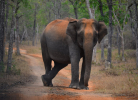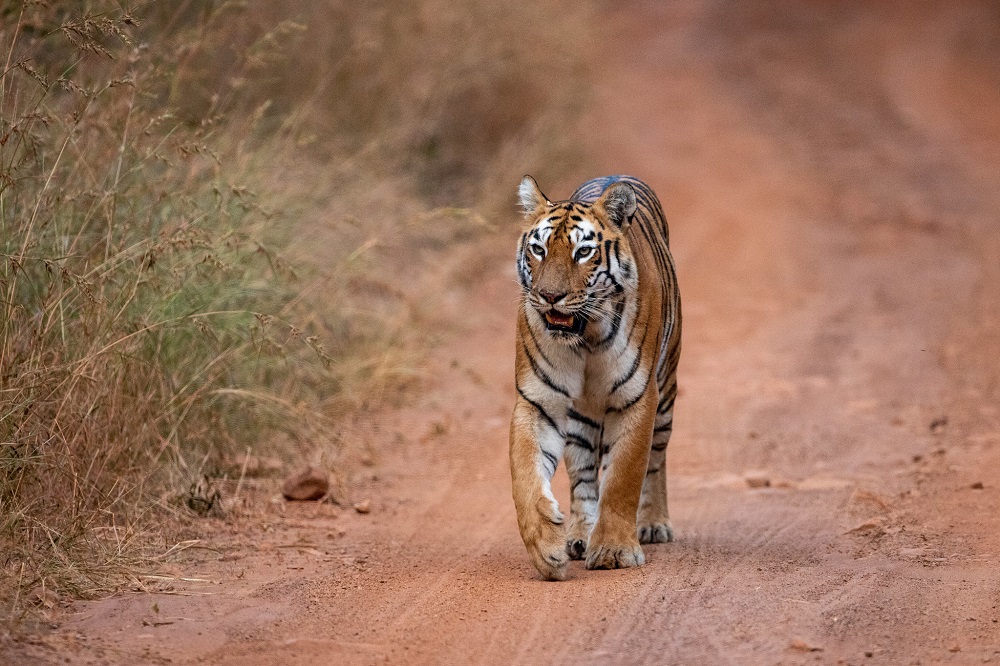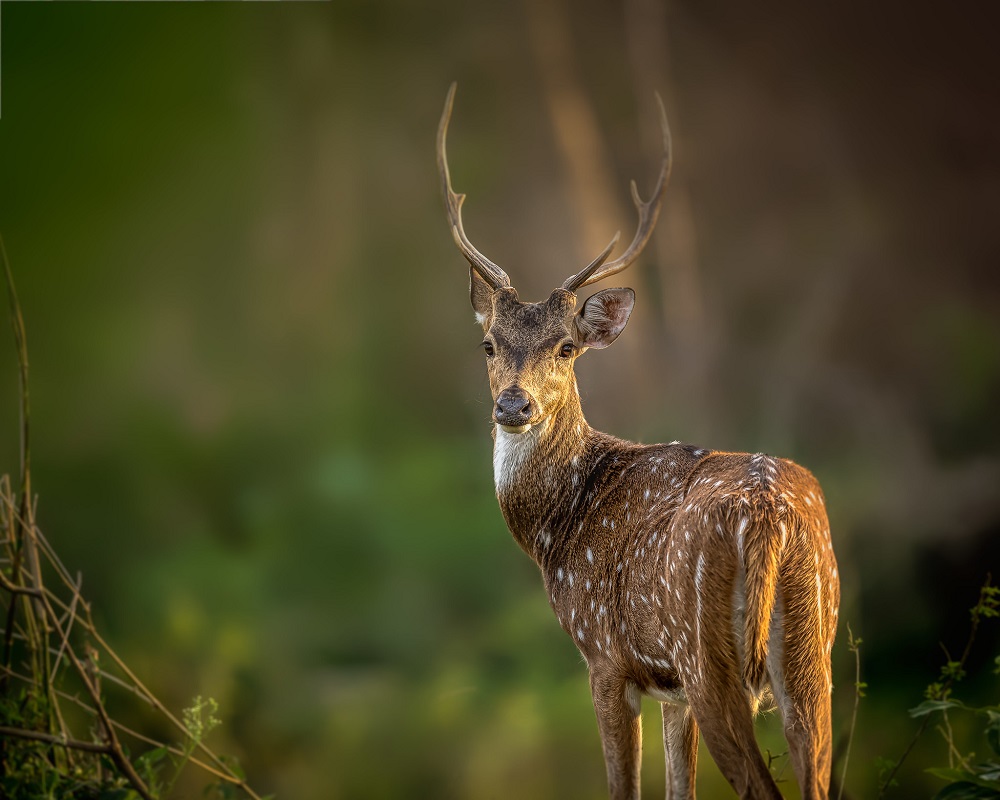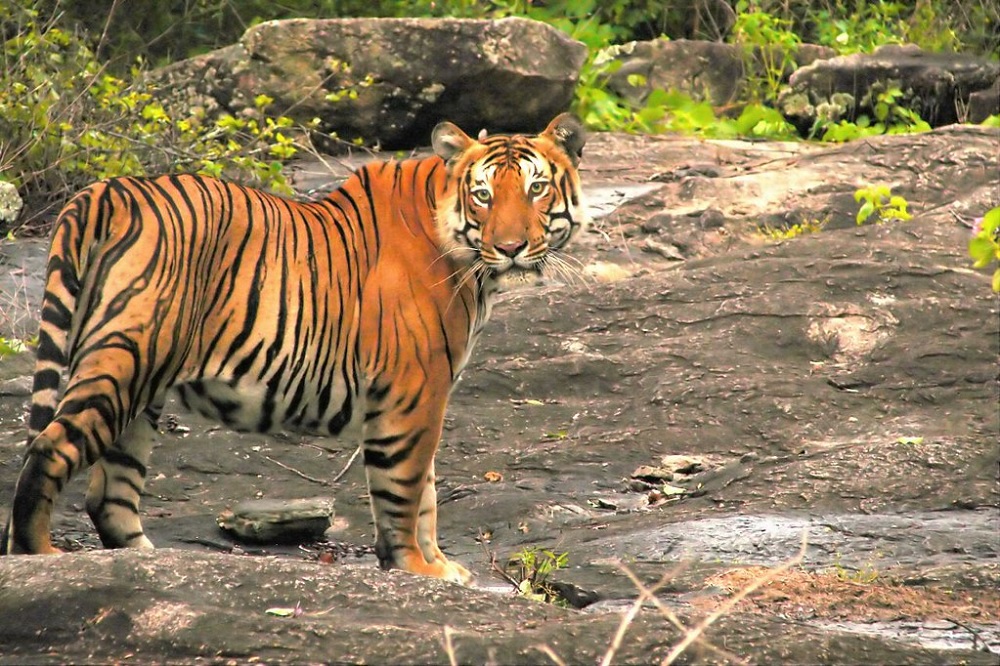Ranthambore National Park
Ranthambore National Park is located at a distance of 158 km from Jaipur in the Sawai Madhopur district of Southeastern Rajasthan. It covers an area of about 392 sq km, surrounded by other sanctuaries like Mansingh Sanctuary & Kaila Devi Sanctuary. It is the biggest National Park in Northern India and one among the prominent Wildlife tourist spots of India.
With its rich flora and fauna, varied species of animals & birds and unique wilderness can be considered as a treat for many wildlife lovers and photographers. It is known to be the best tiger spotting location of India as the park is majorly inhabited by the royal predators.
Different Zones of Ranthambore National Park
Ranthambore has 10 different safari zones for boosting tourism. These safari zones are well maintained under strict rules and regulations by the conservation authorities of the park.
To know the areas with higher possibility of sighting, check out the major zones and the points mentioned below:
Points on Zone 1 : Singhdwar (entry point), Dhoop Chowk, Tuti Ka Nala and Sultanpur Chowki are the few important points at Zone I. SinghDwar, Khabli, Kharia and Kala Peela pani is popular for regular sightings. You can see tigers and other animals anywhere. T39 along with her cubs or T24 can be seen there.
Points on Zone 2 : Jhalra, Bada Gate, Parniya, Telan Pacheri, Amrahi, Rishi Ka Deh, Phuta Bandha, Pandu Deh and Gaandra Deh are some important points at Zone II. Jogi Mahal, Phuta Bandha, Nal Ghati, Phuta Kot, Lahpur Tiraha and Guda Chowki are famous for regular sightings. T19 and T39 with their cubs and T22, T24, T28 & T57 can be seen there.
Points on Zone 3 : Important Points are Padam Talab, Rajbagh platform, Rajbagh Lake, Kadam Khandi, Rajbagh boring, Mandook, Doodh Baawri, Tapman Nalah, High Point and Karonj Ka Nalah. T19 with her cubs, T25 and T28 can be spotted there.
Points on Zone 4 : Important points include Singh Dwar (entry point), Tamba Khan, Gular Kui, Lakkad Da, Malik Talab, Mendki De, Magar De, Aadi Dant, Baba KI Gufa, Aadi Dagar, Bhanwarde, Berda, Semli, Lambi Ka Nalah and Bhoot Khurra. Tigers spotted in this route include T6, T19 with her cubs, T25, T28, T41, T74 and T75.
Points on Zone 5 : Important points of this zone include Jokha, Pili Ghati, Takiya Kui, Dhakda, Bagdah Kachida, Anatpura, Tiraha and Bakola. Tigers spotted in this zone are T6, t16, T25, T28, T41, T73, T74 & T75.
Points on Zone 6 : Soleshwar, Saran Ka Pattha, Patwa Ki Baori and Kala Pani are the important points of Zone 6, where tigers like T8 with cubs, T24, T34 and T39 along with sloth beer & Leopard can be spotted.
Points on Zone 7 : or Chidikho is frequented by tigers like T34 & T8 with cubs.
Points on Zone 8 :or Balas is known for sighting tigers like T58 & T61.
Points on Zone 9 : or Qual Ji is located in Phaloudi Range. It is a game reserve at a distance of 45 minutes drive from Ranthambore Tiger Reserve. It is on the banks of Chakal River and is a home to tigers like T42, T59 and Caracal.
Points on Zone 10 : or Aantri is a home to T13 and her cubs, T42 (Fateh) and T43. Birds can also be spotted at this point in winters.
Flora of Ranthambhore National Park
Ranthambore National Park is enriched with flora. With plenty of water support around 300 species of plant are grown in the Ranthambore National Park. This region is close to the Thar, as a result, it receives inadequate rainfalls and therefore the vegetation in the park is majorly dry deciduous type. About 80% of the vegetation in the park is 'Dhok' (Anogeissus pendula) which is found on hill slopes and valleys.
The park comprises of the trees like Am (Magnifera iIndica), Imli (Tamarindicus indica), Babul (Accasia nilotica), Banyan (Ficus benghalensis), Ber (Zizyphus mauritiana), Dhak or Chila (flame of the forest) {Butea monosperma}, Dhok (Anogeossis pendula), Jamun (Syzygium cumini), Kadam (Authocephalus cadamba), Khajur (Phoenix sylvestris) and Khair (Accacia catechu).
Ranthambore forests have contrasting vegetation such as Karel (Capparis decidua), Khejda (Prosopis specigera), Kakera (Flacourtia indica), Mohua (Madhuca indica) and Neem (Azadirachta indica). Ranthambore National Park also has a variety of aquatic flora such as water lilies and lotus.
Suggested Tour Package : 8 Days - Golden Triangle Ranthambore Tour
Fauna of Ranthambhore National Park
The unusual climate and vegetation of Ranthambhore made the forests dry and left with little and underdeveloped ground. Therefore, viewing of wildlife becomes easier in Ranthambore National Park through safari. It is also known as a virtual island, rich in fauna.
Tigers are solitary by nature and the park is frequented for spotting tigers, which is almost a matter of luck. The evidences of tiger’s activities are also very exciting.
Leopard, Jungle cat, Fishing cat, Caracal and different kinds of cats are found in Ranthambore. Other predators such as Sloth Bear, Jackal, Striped Hyena, Palm civet, Desert fox, crocodile, common mongoose, python, etc. Varied species of deer like antlers (two kinds), sambhar, chital (spotted deer) and antelopes (two kinds), nilgai or bluebull and chinkara or Indian Gazelle are also found in Ranthambore.
Crocodiles can be seen basking around the lakes, serpent eagles, vultures and waterfowl along with 300 species of birds including large Cormorant, Sarus Crane, Painted Spurfowl, Sandpiper, Bronzed winged Jacana, Kingfisher, Painted Sandgrouse, Nightjar, Great horned owl and other migratory which comes to Ranthambore and surrounding areas, will enhance the wildlife experience of the visitors. Ranthambore is an ideal place for bird watchers, nature lovers and wildlife photographers and seems to be a paradise for them.
Wildlife Safari In Ranthambhore
Jungle Safari is considered as the best way to watch wildlife in Ranthambore. There are two amazing safaris available in Ranthambore National Park, which are Jeep & Canter safari. Every day, two safaris are conducted for a specified time. The vehicles carrying groups of tourists must be accompanied by a trained and expert guide are permitted to enter the park. There is a fixed track for the jeep and canter safari within the appointed time. At a time only 16 vehicles are allowed into the park for free movement and better possibility of sighting.
Jeep Safari : A small group of at least 6 people can take on a jeep safari. It can also be arranged for an individual. A jeep safari is recommended for wildlife photographers so that they can capture the clear view of royal predators and other species of animals.
Canter Safari : Besides jeeps, open vans called canters are also available for safari. Canters are recommended for large group of tourists who wishes to go for a safari into the national park. It allows 20 people at a time.
During these safari, one can enjoy being in the open grasslands of forest areas and remains of monuments within the park. The safaris provide ample opportunities of interesting wildlife viewing. On a safari, you can see a tiger hunting deer, basking in sun at the ruins of Ranthambore Fort, drinking water from the water holes or lakes. You can also get the glimpse of the Royal Bengal tigers taking care of their young ones. The safaris can make your tour memorable.
Climate of Ranthambhore
Best Time to Visit Ranthambhore National Park
Ranthambore National Park has dry sub-tropical climate. The three major seasons are summer, winter and monsoon.
Summer : In Ranthambore, summer begins from the end of March and last till June. During this summer the days remain hot and dry with the maximum day temperature above 40°C. At night the temperature drops to 30°C. During the day, one can experience loo.
Monsoon : Ranthambore experiences monsoon from July to September. The weather remains humid and receives two thundershowers a week. From ten to fifteen days the land of Ranthambore does not receive any rain. Therefore, areas in and around Ranthambore suffers from droughts.
Winter : The winter months begins in Ranthambore from November to February, when the night temperature goes below 10°C, while the day temperature raises up to 20°C. The mid-winter is supposed to have rain and fog. During winters, the mornings in Ranthambore national park remains very cold.
Best Time to Visit : It is recommended to visit the park between October and June to enjoy at the fullest.
Safari Timings
You can enjoy the unique wilderness of Ranthambore twice in a day as two trips are conducted every day. The safari timings change with the seasons keeping in mind the convenience of the visitors.
In the month of October :
7.00 A.M. to 10.30 A.M (Morning trip) and 2.30 P.M. to 6.00 P.M (Evening trip)
1st November to 31st January :
7.00 A.M. to 10.30 A.M (Morning trip) and 2.00 P.M. to 5.30 P.M. (Evening trip)
1st February to 31st March :
6.30 A.M. to 10.00 A.M. (Morning trip) and 2.30 P.M. to 6.00 P.M (Evening trip)
1st April to 15th May :
6.00 A.M. to 9.30 A.M (Morning trip) and 3.00 P.M. to 6.30 P.M. (Evening trip)
15th May to 30th June :
6.00 A.M. to 9.30 A.M. (Morning trip) and 3.30 P.M. to 7.00 P.M. (Evening trip)
How to Reach Ranthambhore National Park
Ranthambore National Park is located in Sawai Madhopur district of Rajasthan. It is just 158 Km away from Jaipur and 381 Km from the capital city, Delhi. Therefore, it can be easily accessed from the major cities in and out of the c country through airways, railways and roadways.
Airways :
The nearest airport to Ranthambore National Park is Sanganer Airport. It has access to several international flights from the major cities of the world and India.
Railways :
Sawai Madhopur Railway Station is the nearest railhead to Ranthambore National Park. The railway station is located 10 km away from the park. To reach your desired destination, you need to hire a cab, taxi or board a bus.
By Road :
Ranthambore National Park is very well connected through public and private bus. These buses run within the city and other major cities like Jaipur, Jodhpur, Ahmedabad, Ajmer and Delhi.
If you are visiting the cities close to Sawai Madhopur then do pay a visit to the famous national park called Ranthambore National Park.
Distance between the Major Cities and Ranthambore
- Jaipur to Ranthambore 180 Km (Approx. 3 Hours)
- Bharatpur to Ranthambore- 202 Km (Approx. 3 Hours 37 Minutes)
- Agra to Ranthambore- 239 Km (Approx. 4h 23 Minutes)
- Delhi to Ranthambore- 381 Km (Approx. 6 Hours)
- Udaipur to Ranthambore- 388 Km (Approx. 6 Hours 10 Minutes)
- Ahmedabad to Ranthambore - 640 Km (Approx. 9 Hours 47 Minutes)
- Mumbai to Ranthambore - 1031 Km (Approx. 16 Hours 51 Minutes)
Best Palces to Stay in Ranthambore
There are many places around Ranthambore National Park where the tourists can have comfortable stay during their wildlife tour. Below mentioned are the few popular lodges, hotels and resorts:
- Vanya Vilas
- Aman -i- Khas
- Sher Bagh
- Dev Vilas
- Nahargarh
- Taj Sawai Madhopur Lodge
- Khem Vilas
- Tree House Anuraga
- Tiger Den Resort
- Ranthambore Forest Resort
- Ranthambore Regency
- Tiger Moon Resort
- The Tiger Villa
- Abrar Palace & Jungle Camps
- Annexe Haveli
- Ranthambore Kothi Resort & Spa
- Tiger Heaven Spa & Resort
- Sher Vilas
- Ankur Resort
- Raj Palace
- Ranthambore Vatika Resort
- Sanctuary Resort
- Ranthambore Safari Lodge
- Hotel Green View Ranthambore
- Jungle View Resort
- Ananta Palace Ranthambore
- Siris18 Ranthambore
Conservation History of Ranthambore
Ranthambore National Park is named after the fort standing in the middle of the forests. The name of the fort was originated from two hills – Thanbhor and Ran. The fort was built on the Thanbor hill and the other hill called Ran is at the back of the fort.
1970 : Ranthambore was earlier the hunting reserve of the Maharajas of Jaipur. They continued hunting even after it was declared a sanctuary in 1970 till hunting was banned in the same year.
1955 : It was declared as Sawai Madhopur Wildlife Sanctuary.
1960 : Queen Elizabeth II of England along with H.R.H Duke of Edinburgh visited Ranthambore in the year 1960 for a royal hunt, as guests of the Maharaja of Jaipur.
1973 : Tiger Project was launched on April 1, 1973 in which nine tiger reserves were chosen including Ranthambore.
1981 : Ranthambore was declared as National Park in 1981.
1981 and 1990/1991 : Between the year 1981 and 1990 or 1991 the villages were relocated outside the Ranthambore National Park. At the same time, the tiger population gradually started to increase and even new generation of tigers were born to tigresses.
1989 : After the project Tiger was introduced, the census revealed 44 tigers in 1989 from a mere count of 14.
1992 : There was a drop in the tiger population as the census showed only 15-20 tigers. The census gave an idea that the tigers were being poached in the East market, for their bones.
2002 to 2003 : An increase in the count of tiger population was found in the year 2002 to 2003 as strict protection was given to the predators.
2005 : India went through its Third Tiger Crisis as the population dropped from 47 to 26. It was presumed that 21 tigers were being poached as they were missing.
















